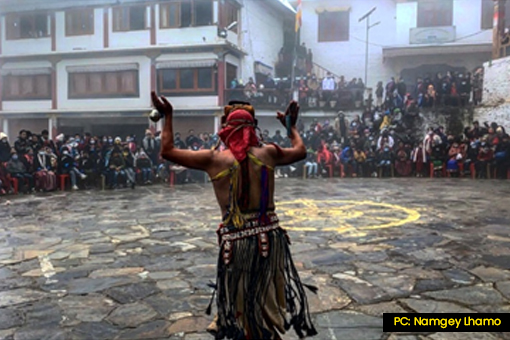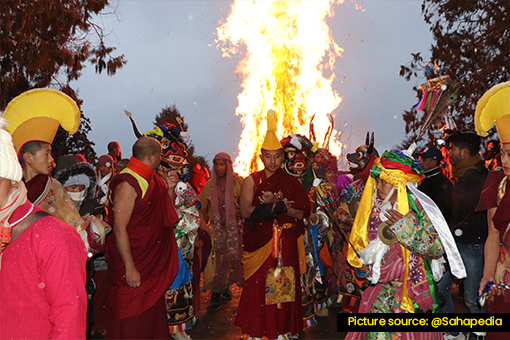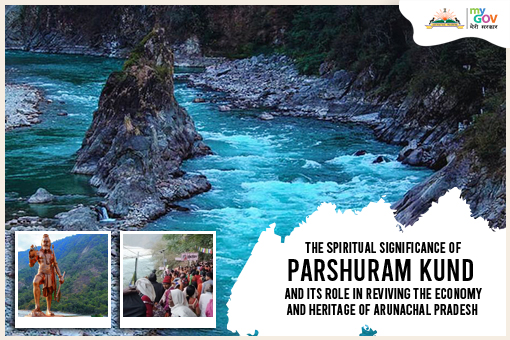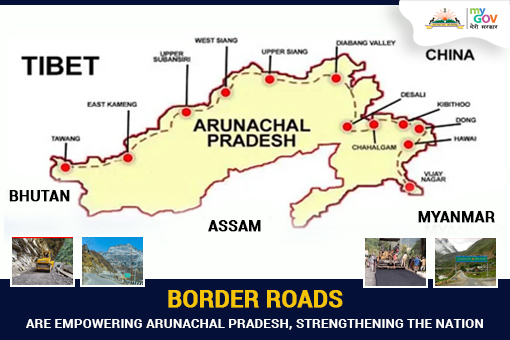Torgya Festival, Arunachal Pradesh

A festival to welcome healthy and a prosperous new year, Torgya festival is celebrated by the Monpa community of Arunachal Pradesh. This three-day festival is popularly celebrated during the first month of the year i.e January. It is held according to the Buddhist calendar days of 28th to 30th of Dawachukchipa (11th of the moon), which corresponds to 10 to 12 January of the Gregorian calendar. The basic belief of the people is that the celebration of this festival is to eliminate any kind of external energy from the earth which can harm sentient beings and to protect them from natural calamities.
This is a festival comprising oral and dance performances portraying the mythical events which are believed to have taken place in the past. The dances are performed by the monks from the monastery itself that requires strict training and discipline and a lot of practice before the programme. The distinct components of these performances are the colourful costumes and robes they wear while dancing. Many dance forms take place at this festival and are believed to be beneficial if observed in person.
Two important dance (cham) forms are as follows:
(Fig.1): Pha Cham: The early morning dance takes place in the courtyard of Tawang monastery to purify the body of the people and spread good health and prosperity.

PC: Namgey Lhamo
(Fig. 2): Losjker Chungiye: performed by 12 monks for the 12 sun signs (Buddhist horoscope dance).

P.C: Manash Pratim Borah and Tashi Tsering
Some other important dance forms are:
(Fig. 3): Palden Lhamo cham

PC: @TendorJack [Twitter handle]
(Fig. 4): Lham tsokor cham as Palden Lhamo’s guards.

PC: @TendorJack [Twitter handle]
(Fig. 5): Durdak cham or Skeleton dance (protector of the graveyard)

PC: @TendorJack [Twitter handle]
Each of the dances showcases a myth, and the costumes and masks represent various animals such as monkeys, tigers, etc.
So the first day of the festival begins by worshipping an image named “Torma”. Making of the 3-feet tall and 2-feet wide effigy image begins 16 days before the festival, crafted by 14 Lamas (Monks). Four ingredients: butter, barley, milk, and molasses are used to make this tall effigy and take it to a particular location. After reaching the location, the Torma and put it in the burning Mechang (dried bamboo leaves). Post performing the ritual, they return to the monastery. This procession is performed with great pomp and show.
Here is the picture showing the ritual:
(Fig. 6): “Torma Ritual”

Picture source: @Sahapedia
The second day mainly consists of dance and oral dialogues between the dancers.
The ritual (Wang) on the final day takes place in the monastery where sweets(Tseril) and local beers (Tse-chang) are distributed followed by the blessings of the Head Lama. He then blesses all the gathered devotees by touching their heads; during this procedure, the other monks tie small pieces of fabric, of the half to one-inch width, of different colours on the wrists of devotees.
Likewise, strips of yellow cloth are tied by a senior Lama around the neck of all lamas and Anis (nuns), as a sign of blessings for happiness and long life.
This ceremony is followed by the final dance performance i.e the Losjker Chungiye cham of Torgya festival that concludes the auspicious occasion of Tawang-Torgya.





